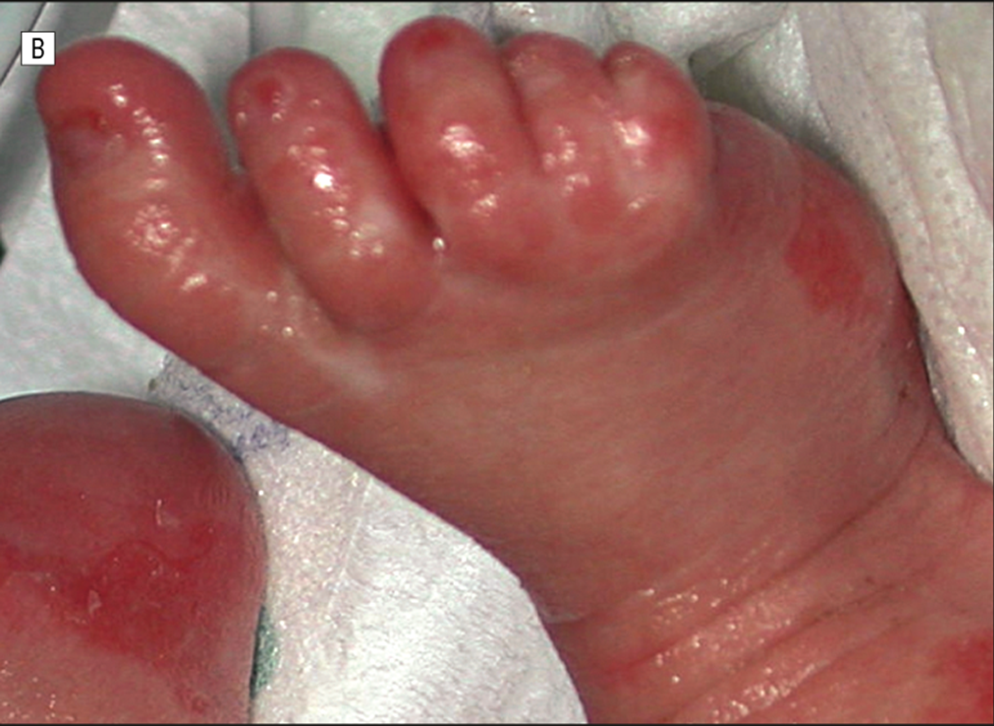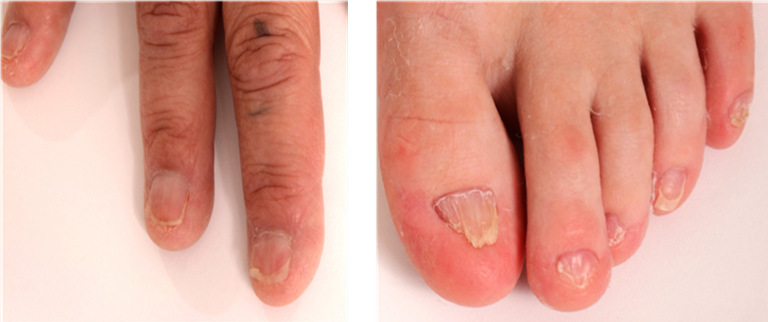Nail Abnormalities in Ectodermal Dysplasia
Just as there are many types of ectodermal dysplasia, nail abnormalities can also vary widely among individuals with these conditions. Nails are formed from the ectoderm—the same layer of cells that gives rise to hair, skin, and teeth. As a result, nail symptoms are fairly common in people with ectodermal dysplasias. However, not everyone affected will experience nail changes.
It’s important to know that many nail abnormalities—such as changes in shape, thickness, or growth—can also occur on their own or as part of other medical conditions. If you or someone you care about is experiencing nail symptoms, we encourage you to explore our resources to help you seek a diagnosis.
Common Nail Symptoms in Ectodermal Dysplasias
Some of the most commonly reported nail abnormalities include:
-
Poorly developed nails
-
Small fingernails or toenails
-
Nails that are thick, thin, brittle, or cracked
-
Discolored nails
-
Abnormally curved nails
-
Ridged nails
-
Slow-growing or periodically shedding nails
-
Light spots, lines, or patches on the nails






Increased Risk of Nail Infections
Abnormal nails are more prone to infection. The nails and surrounding skin (cuticle) can become infected by fungi, yeast, or bacteria. Signs of infection include thickening or discoloration of the nails, swelling, tenderness, or an unpleasant odor.
If you suspect an infection, it’s important to seek medical advice.
Nail Changes by Syndrome
Different types of ectodermal dysplasia are associated with distinct nail symptoms. Here are some examples:
Ankyloblepharon-Ectodermal Dysplasia-Cleft Lip/Palate (AEC) Syndrome
People with AEC syndrome may have nails that are absent, thinning, thickened, irregular in shape, or have uneven edges.
Clouston Syndrome
Nails may be thick, discolored, and grow very slowly. In some cases, the nails may lift away from the fingers.
Ectrodactyly-Ectodermal Dysplasia-Clefting (EEC) Syndrome
This condition can cause missing nails, thickened nails, or small pits in the surface of the nails.
Focal Dermal Hypoplasia (Goltz Syndrome)
Nail changes may include ridging, splitting, missing nails, and V-shaped notches at the tips.
Hypohidrotic Ectodermal Dysplasia (HED)
Individuals with HED often have thin, fragile nails.
Managing Nail Symptoms
If you/your child, or someone you care for is experiencing nail abnormalities, know that you’re not alone—and there are treatment options available. It is important to seek medical advice for infections.
Please contact us if you have any questions or concerns regarding nail issues in ectodermal dysplasia.
You can also read our article Nailing Down for more information on the common ED nail problems.

